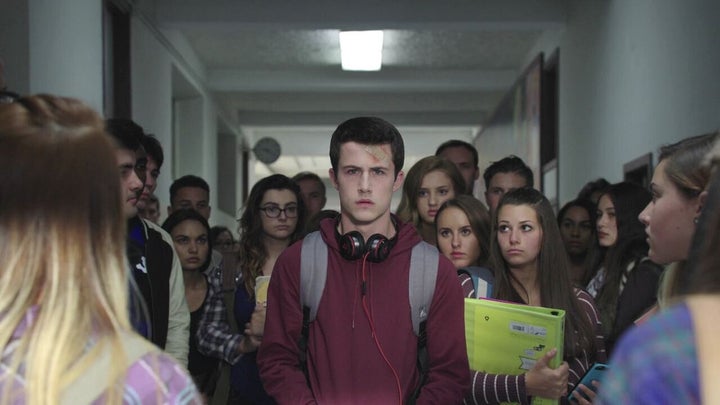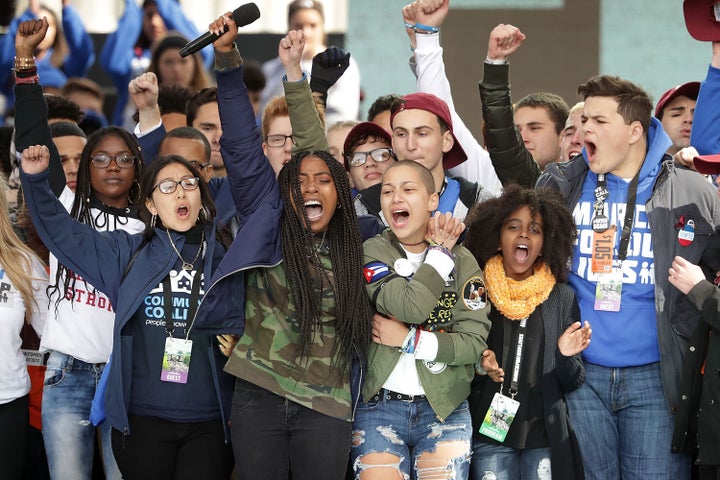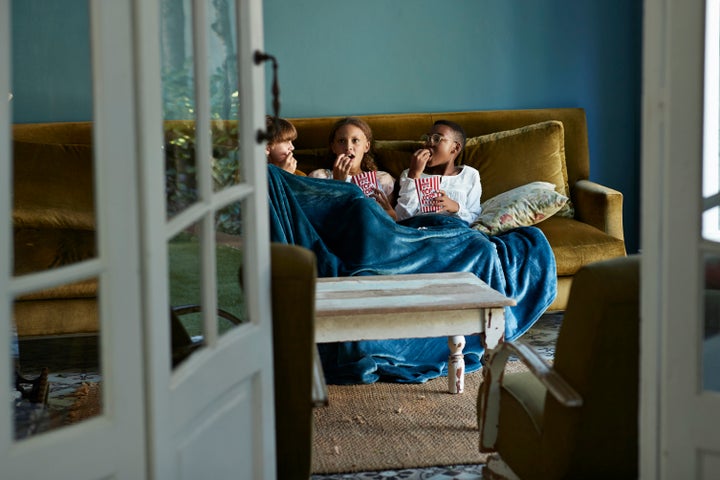
Whether or not the kids are alright continues to be among the more pressing questions posed by anxious parents. Most teenagers today will probably find they’ve been tossed into a zoo-like amphitheatre, inside which their habits — sexual, behavioural, nutritional — are surveilled, analyzed, documented and, perhaps most notably, dramatized.
“Euphoria,” HBO’s recently concluded drama — created by a 34-year-old man, about wayward, self-discovering teens who have risky sex, take risky drugs, and riskily violate each other — does very little to alleviate this anxiety. (It’s also executive produced by Canada’s very own Drake.) This fear has been only further stoked by a flowering genre of television that almost seems to spit in the face of the concerned parent.
It’s called the “teen drama,” and it paints a vivid (if exaggerated) picture.
Watch: Zendaya responds to the controversy around HBO’s “Euphoria.” Story continues below.
“13 Reasons Why,” which will be returning later in August, is about a teen girl’s suicide. “End of the F***ing world” is about a kid psychopath. “Elite,” teen murder. Ditto for “Riverdale.” “The Society” is “Lord of the Flies,” but with sex and alcohol and more murder, and everything else is far too exhausting to get into, but it’s safe to say this brand of entertainment is not, in the near future, going anywhere.
The parental aversion to this genre is, in many ways, justified — studies, in the past, have indicated that teenagers, when encountering media, are incredibly impressionable.
“What we’ve seen is that there is a consistent relationship between being exposed to, or seeing sexual content in the media, and teenage attitudes towards sex or sexual behaviour,” says Dr. Amy Bleakley, a professor in the department of communications at the University of Delaware.
“When adolescents don’t really have experiences of their own to draw on,” she says, “what they see in the media becomes what they think is supposed to happen, what things are actually like.”
Teens these days are actually pretty cautious
But research that examines the link between popular culture and adolescent brains has often been inconclusive and, at worst, easy to sensationalize, used by groups like the conservative watchdog Parents Television Council that seeks to obliterate any content that might inflict “proven long-term harmful effects” on kids, i.e. any and all depictions of violence sex, sexualization, profanity.
Some of this can seem a bit redundant, given what our latest group of adolescents — “Generation Z” — are actually like. “If ‘entitled’ is the most common adjective, fairly or not, applied to millennials,” a writer at Newsweek contemplated in June, “the catchwords for Generation Z are practical and cautious.” The teenagers who are the subjects of all these melancholic dramas are actually, in real life, quite safe, enough so that they’re being called the “cautious generation.”

Every two years, 10,000 high school students in the U.S. (Canada has no comparable study) complete the CDC’s Youth Risk Behavior Surveillance Survey, and the most results found that, across 2.6 million high school students, kids are very unlikely to engage in any of those behaviours we find in teen dramas.
The majority don’t drink, or smoke, or fight, or do drugs or have sex, or get pregnant, or do anything, really, that could be accurately construed as “risky behaviour.” These kids are even wearing helmets and seatbelts, both decidedly uncool habits in the eyes of the James Dean-era films their parents loved to watch.
“In the short term, we’re undergoing a period of dramatic improvements that have not been widely acknowledged or underlined,” David Finkelhor, director of the University of New Hampshire’s Crimes Against Children Research Centre, told the New York Times. “And it’s too bad.”

It’s still hard to say how susceptible teens are to media influence
“I don’t have any reason to believe the relationship between adolescent brains and media is shifting,” Bleakley says. She explains that with the advent of social media, teens are absorbing even more images now, which is to say that while the cultural situation may be changing, the impressionability of the adolescent brain is not. Nor is it easy to make grand, sweeping assumptions.
“Of course you want answers about your average kid, about how susceptible they are,” Bleakley says, “but it’s really hard to generalize across the board.”
But no matter their age or social situation, it’s unlikely any teenager will find themselves in an environment, however insular, where they won’t witness or experience these things.
“It’s important to understand that this issue is nuanced,” Bleakley notes, explaining that the degree to which a teen is influenced by a show can usually be determined by their social environment. If a kid has never had sex before, for example, and hasn’t had conversations with their parents about sex, then seeing lots of teenagers have sex on television “might encourage them to actually engage in sexual activity earlier than they might have otherwise,” she adds.

Albert Bandura, who is Canadian and thought to be the greatest living psychologist, theorized that people learn not only by doing, but also by seeing, and that new behaviours can be acquired solely by observing others engaging in them.
“People are more likely to learn and adopt what they see when the find the models to be similar to themselves,” Bleakley explains. “So teen shows, depending on how [viewers] relate to those characters, might be more influential than other shows.”
Media literacy is important in teens
But, depending on the consequences of the actions on screen — whether the character is rewarded or punished — will the viewer decide to replicate the behaviour? This remains a scholarly question: whether this resistance is possible, whether teenagers — especially of a generation that’s being hailed “pragmatic” and “tame” and “responsible”— are capable of rejecting what they see on screen. Whether they’re capable of deciding that the characters in “Euphoria,” for example, aren’t ideal role models.
“That really depends on the teenager,” Bleakely says. Some teenagers have “media literacy” — the ability to critically analyze something and decide it might not be realistic. But this is an ideal scenario, and requires the teenager to have grown up in an environment where this sort of critical thought was made available.
It’s hard to think about all of this without your brain carefully drifting toward “13 Reasons Why,” Netflix’s troubling (to say the least) show about a teenage girl’s suicide that alarmed health experts. Researchers analyzed the association between the show and U.S. teen suicide rates, which they found spiked, the month after the show’s release, among boys aged 10 to 17.
Their research isn’t a counterargument to the CDC study. While teenagers might be making better decisions than their parents did, they happen to face some heightened risks: higher suicide rates (mostly by firearm), higher rates of anxiety, and higher rates of depression. Aside from these problems — which are urgent, and deserve to be considered sensitively — the numbers still argue that today’s oft-maligned generation is doing alright.
Use these shows as an opportunity for discussion
Still, the issue is complicated, Bleakely says. The question of whether or not parents need to be worried about their kids is a bit too simplistic, she argues. “Parents have a lot to be concerned about already,” she says. “We can’t always put the blame squarely on media. Media in adolescent life is not always a bad thing. It often gets perceived that way, but it actually could be used for good, too.”

These television shows are part of a larger “ecological system,” Bleakley says, one with interlocking influences and opposing forces. There are friends who might be having sex, peers who might be doing drugs, siblings who might be … not wearing seatbelts. So many factors in a kid’s life contribute to how they’ll be later on, Bleakley says, and to think TV shows are the prime suspect isn’t completely sound.
“What’s important is that parents be aware of the things their kids are being exposed to,” Bleakley says.
She doesn’t argue for censorship. Instead, she argues these shows, if teens are going to be watching them, should be used as an opportunity for discussion.
“It’s always good to use them as conversation starters — for parents to engage in conversations about sex, safe sex, drug use, all those things.”